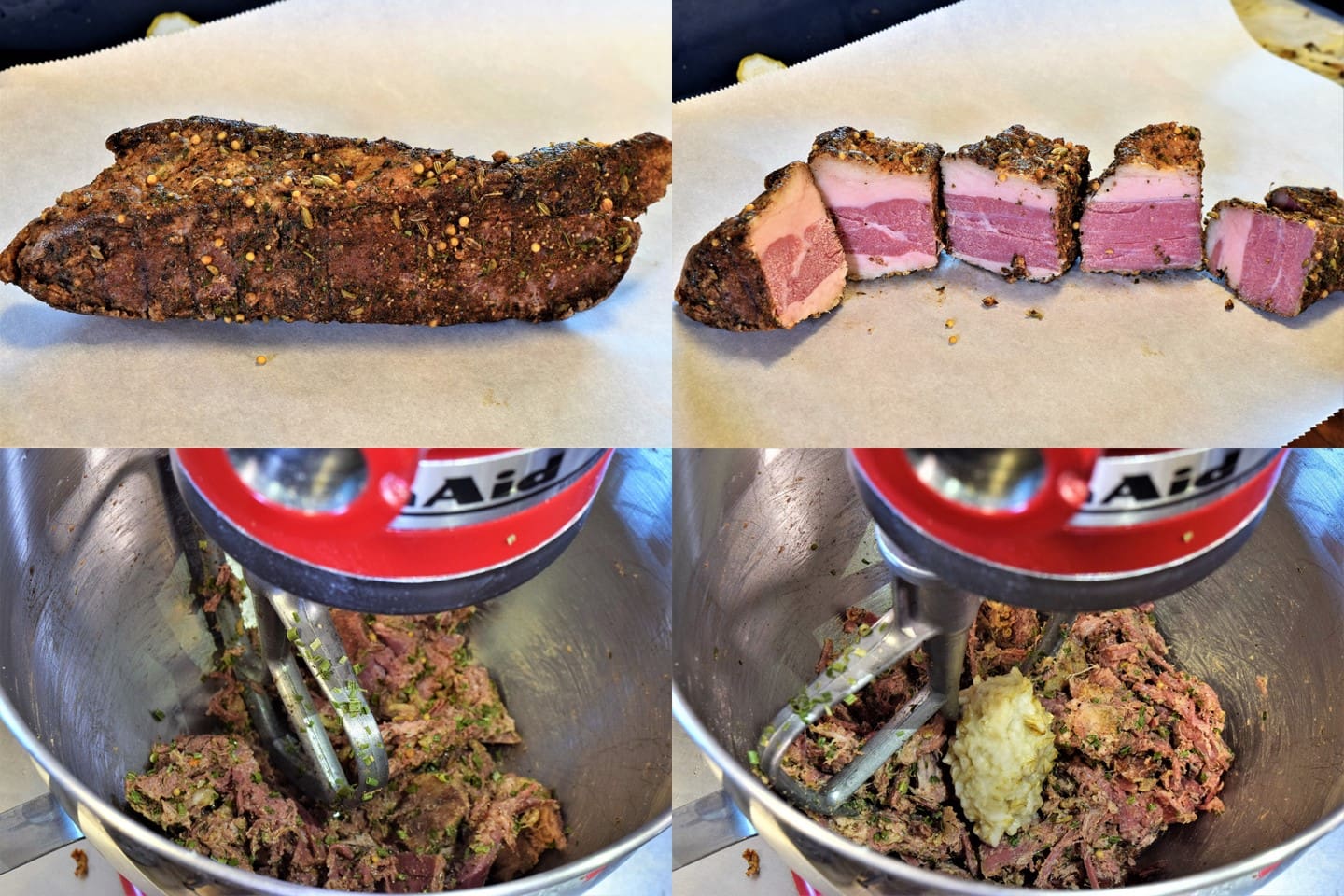Procedure:
Cut pastrami into approx. 1 oz./30g. pieces. Using the paddle attachment on a Kitchenaid type mixer, mix the beef until it shreds. The alternative is to put the pastrami in a Ziploc Gallon bag and tap with a rolling pin until it comes apart. Add the chives, and then the oatmeal. Mix well.

Set the hash aside, and fry the Milles-Feuilles Potatoes.
Form the pastrami hash into a ring. As shown, I vacuum sealed it, but that is not really necessary. You can form the hash into a ball, put it in a Ziploc Gallon bag and use your fingers to shape it into a patty. If you have a shaping ring similar to the one pictured, you can place the ring on top of the plastic bag and use it to confine the hash to a circle.
Put the hash on a large plate an keep warm in the oven while you poach the eggs. Bring enough water to boil so that the eggs are fully submerged. Keep another bowl of cold water on the side. When the water in the pan actually boils (poached is a misnomer), add 2 oz./60 ml white vinegar, and return to boil. The vinegar prevents the white from falling off the yolk. Use a spatula to swirl the water, and add the eggs to the water. The swirl keeps them off the bottom. Continue to boil on medium high. It should not stop boiling. Do not stir, but slide a flat spatula under the eggs to make sure they are not sticking. Eggs: 3.5 minutes is the guideline for a firm white and a slightly thickened yolk, 140F/60C.
Once the whites appear firm enough, use a slotted spoon to lift them out of the solution and into the bowl of cold water. This is where a lot of people go wrong. Reduce the heat on the water, but do not turn it off.
Make sure the butter is in a vessel with a narrow bottom that a stick blender will just fit into. Squeeze a little lemon juice into the butter, and add a pinch of salt and pepper. Remove ONE poached egg and add it to the butter.
Insert a stick blender into the glass, and pulse the egg/butter mixture. Do not lift the blender! This will break the sauce. Continue to pulse, and the blender will pull the butter into the yolk. To learn more about this process, read this article. For even more detail, click the link here
Drop the remaining two eggs back into the pan of hot water and turn it off. It will only take a few seconds to heat the eggs and this prevents all of the last minute scurrying that occurs when people try to poach eggs at service. Garnish your plate with the potatoes if you chose to make them. Use the slotted spoon to lift out the eggs, let them drain well in the spoon. Place them on top of the hash, sprinkle with a little S+P, and pour some of the sauce on to the plate as shown. Drizzle with a little balsamic syrup or even a little maple syrup. I use a little tomato vinaigrette for the color. Chopped parsley also a nice touch!
So simple, and yet so alluring.
This is truly a 3.5 minute poached egg. The internal temperature of the yolk is approx. 140F/60C. There is no shame in preferring them more well done; another 2-3 minutes will achieve a firm 165F/74C yolk.








